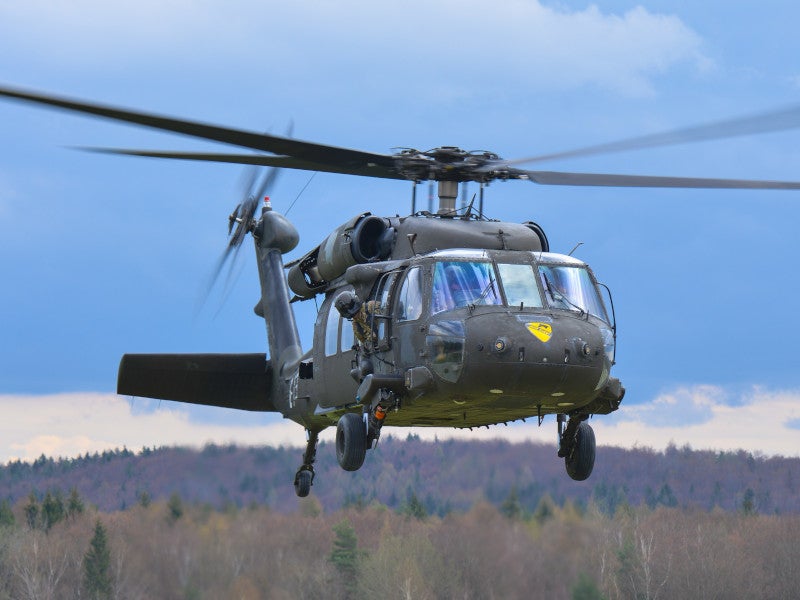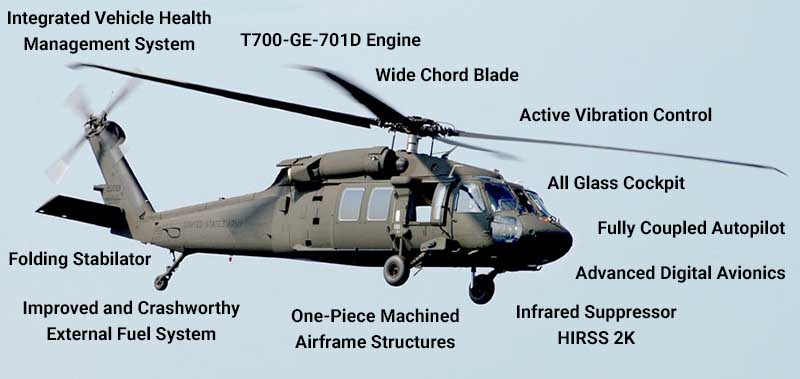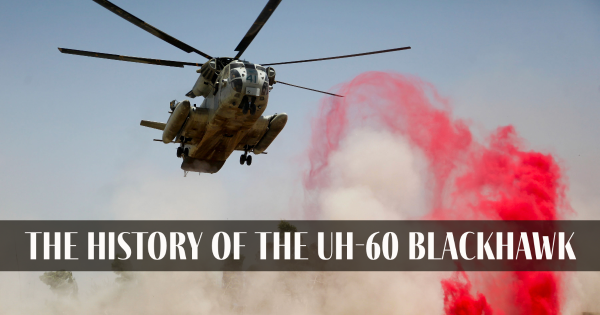Flight Ready: Guaranteeing Ideal Condition for Your UH 60 Helicopter
Flight Ready: Guaranteeing Ideal Condition for Your UH 60 Helicopter
Blog Article
Recognizing the Mechanics and Engineering Behind Uh 60 Helicopters
The UH-60 helicopter, frequently recognized as the Black Hawk, stands as a peak of modern-day rotorcraft modern technology, symbolizing a mix of robust design and detailed mechanics. As we peel off back the layers of the UH-60's style, a world of complex systems and meticulous engineering comes to light.
Background of UH-60 Helicopters
The background of UH-60 helicopters traces back to the late 1970s when the USA Military looked for a sophisticated and flexible energy helicopter to replace its aging fleet. In action to this need, the Sikorsky Aircraft Company developed the UH-60 Black Hawk helicopter. Introduced in 1979, the UH-60 swiftly came to be a staple in army operations due to its outstanding capacities.
The UH-60 was developed to master a range of goals, consisting of army transport, medical evacuation, digital war, and unique procedures. Its capability to adapt to different functions made it a beneficial property to the united state Army and other army pressures all over the world
Over the years, the UH-60 system has undertaken numerous upgrades and variations to boost its performance and equal evolving mission demands. These helicopters have actually seen considerable solution in conflicts such as the Gulf War, Afghanistan, and Iraq, showcasing their reliability and versatility in varied operational settings. The UH-60's abundant background is a testament to its long-lasting legacy as a leading utility helicopter.

Engine and Power Equipments
Utilizing advanced propulsion innovation, UH-60 helicopters are geared up with advanced engine and power systems to guarantee optimal efficiency and integrity in a series of operational situations. The UH-60, frequently referred to as the Black Hawk, is powered by two General Electric T700-GE-701D engines, each efficient in supplying up to 1,940 shaft horse power. These turboshaft engines give the essential thrust for the helicopter to perform its objectives effectively, including army transportation, medical discharge, and battle support.

Rotor System and The Rules Of Aerodynamics
How do the blades system and aerodynamics of UH-60 helicopters add to their functional effectiveness and trip capacities? The rotor system of the UH-60 helicopter plays an essential duty in offering lift and propulsion. The UH-60 includes a four-bladed, totally verbalized blades system that enables for high maneuverability and security during trip. This design enables the helicopter to do a wide array of goals, from transportation and clinical emptying to battle procedures.
Aerodynamics also play an essential role in the efficiency of UH-60 helicopters. The streamlined fuselage and rotor blade design lower drag, allowing the helicopter to achieve higher rates and far better gas performance. The aerodynamic design of the UH-60 likewise adds to its capacity to operate in diverse ecological problems, consisting of hot temperatures and high elevations.
Avionics and Flight Control Solution

In its intricate sychronisation with the blades system and aerodynamics of UH-60 helicopters, the avionics and flight control systems form a crucial network of innovations shaping the aircraft's functional abilities. In the UH-60, these systems include electronic displays, communication radios, General practitioner navigating, climate radar, and auto-pilot more info here systems.
The flight control systems of the UH-60 are liable for translating the pilot's inputs right into the proper changes to the rotor system, guaranteeing steady trip and ability to move. These systems contain hydraulic actuators, servos, and computers that collaborate to regulate the tail and major blades, along with various other trip control surface areas. By specifically handling the helicopter's trip dynamics, these systems make it possible for pilots to perform a vast array of missions, from transport and search-and-rescue to combat operations, with precision and confidence.
Function and Applications in Aviation
The role and applications of avionics and flight control systems in aeronautics are essential to making sure the effective and safe operation of airplane, consisting of UH-60 helicopters. Avionics systems in UH-60 helicopters encompass an array of digital systems that aid in navigation, interaction, surveillance, and regulating numerous airplane functions. These systems consist of digital displays, autopilot systems, interaction radios, general practitioner navigation equipment, and weather radar. Flight control systems play an essential role in steering the helicopter in the air, maintaining security, and making sure exact movements. The fly-by-wire technology made use of in contemporary UH-60 helicopters translates pilot inputs into electronic signals, which are after that translated by the trip control computer systems to adjust the airplane's control surfaces. In addition, these systems integrate safety attributes such as autopilot settings, terrain understanding cautioning systems, and security enhancement systems to improve the total security and operational capacities of the UH-60 helicopters in different goals, including army transport, clinical evacuation, search and rescue, and airborne firefighting.
Final Thought
In verdict, the UH-60 helicopter is a functional aircraft with an abundant history and advanced engineering. Its engine and power systems, rotor system, aerodynamics, avionics, and trip control systems all function with each other to make it a reliable and efficient equipment.
In its elaborate sychronisation with the rotor system and aerodynamics of UH-60 helicopters, the avionics and flight control systems create a crucial network of technologies shaping the aircraft's operational capacities.The trip this post control systems of the UH-60 are accountable for translating the pilot's inputs into the suitable adjustments to the blades system, making wikipedia reference certain secure flight and ability to move. Avionics systems in UH-60 helicopters incorporate an array of digital systems that aid in navigation, interaction, tracking, and controlling different aircraft functions. In addition, these systems integrate safety attributes such as autopilot modes, terrain recognition cautioning systems, and stability enhancement systems to enhance the total safety and functional capacities of the UH-60 helicopters in different goals, consisting of army transport, clinical emptying, search and rescue, and aerial firefighting.
Its engine and power systems, blades system, the rules of aerodynamics, avionics, and flight control systems all function together to make it a trusted and reliable machine.
Report this page